
![]()
Project Gotham Racing
2000-2007
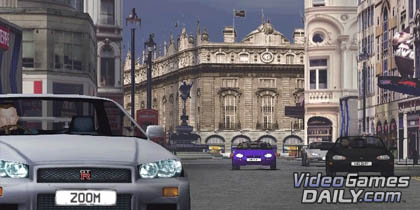
Kicking off early in 2000 with the Dreamcast debut Metropolis Street Racer, this series went from strength to strength as it entered Xbox-exclusive territory with Project Gotham Racing in 2001. In a sense, this series is one that symbolised the Xbox platform as a kind of spiritual successor to the Dreamcast in my eyes. The best city-based racing series around, MSR was the first racing game to seriously recreate realistic, real-world cities and convert them into virtual playgrounds for state of the art racing machines, with the kind of attention to detail and fine craftsmanship that Bizarre Creations quickly became synonymous with. Every entry in the series through to PGR4 in 2007 added new cities and constantly improved the formula, not least of all in terms of the online multiplayer modes. The various game modes and mission design successes throughout the series are too numerous to list here, but rarely did the developer put a foot wrong in building highly addictive, enjoyable racing experiences with superb replay value. I’m very interested to see where the now-Activision-owned developer goes next with Blur, which could well be PGR’s spiritual successor – as well as what Microsoft may or may not do with PGR in future (Shane Kim has suggested that Forza developer, Turn 10, could take on PGR duties).
Further Reading: Review, PGR3 Interview, PGR4 Interview
![]()
New Super Mario Bros.
2006
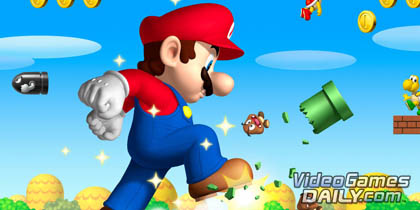
I was always a “Sonic” kid growing up as a gamer, and I wasn’t particularly ashamed to say that I’d missed out on two-dimensional Mario games without much of a second though. How wrong I realised I had been when I popped New Super Mario Bros. into the Nintendo DS. When I spoke to other gamers about how much I loved the game’s perfect level design and fluid gameplay, or how the flawless learning curve and pacing kept me playing NON-STOP FOR DAYS, they told me: “You’re late to the party Adam. About twenty years late.” NSMB made me realise I urgently needed to tuck into some of this mandatory Nintendo history, although I didn’t really find anything as flawless or to my taste as the game experience offered on the DS outing, suggesting that NSMB was the culmination of everything Nintendo has learned about 2D platform gameplay in twenty years, expertly crafted into one perfect release.
Further Reading: Review
![]()
Ninja Gaiden
2004-2008
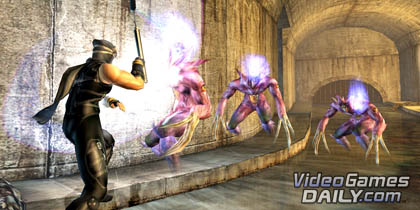
When it comes to the action adventure, hack-and-slash genre, I choose Team Ninja’s Ninja Gaiden games without hesitation. Not because ninja mythology is more to my taste than Greek mythology or gothic culture / whatever, but because whenever I’ve picked up a Devil May Cry or a God of War, it has simply never grabbed me by the balls in the way that Ninja Gaiden on the original Xbox (and its 2008 sequel) did. While I of course pay due respect to the critical and commercial success of both competing franchises – as well as the fact that Devil May Cry was around first – Ninja Gaiden has always felt “right” to me in terms of the raw gameplay connection, I guess in a similar way that Virtua Fighter has always felt instinctive and deep to me where all other 3D fighters (including Team Ninja’s own Dead or Alive) somehow feel floaty and off-target by comparison. Ninja Gaiden was without a doubt one of my top games of all time. The combat gameplay is just pure, hardcore awesome, that permits any decent gamer a chance to beat it if they can just master the basics and care enough to persist. To that end, the sheer fun of playing as Ryu Hayabusa, the beautiful characters, stunning environments and epic boss battles – as well as the “badge of hardcore honour” for beating the game at all – made me want to complete this highly challenging game at any cost. One particular boss took me about 80 attempts to beat – it was often frustrating as hell, but I didn’t care. Ninja Gaiden II was a fantastic sequel as well, and while I haven’t played either game’s PS3-exclusive “Sigma” follow-ups properly, I can smile in the knowledge that I enjoyed the significantly tougher versions – and not on the pussy difficulty level either.
Further Reading: Review, Review (sequel), Itagaki interview
![]()
OutRun2
2003-2006
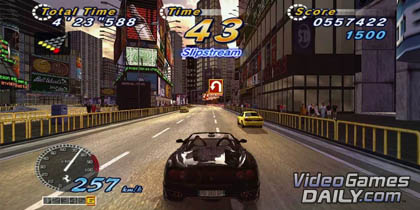
When I first got a chance to play this powerhouse AM2 arcade racing game in 2003, it was love at first sight. Staying true to the roots of Yu Suzuki’s 1986 classic, this Sega super-sequel combined cutting edge Chihiro coin-op technology with everything that made the original title legendary. By the time it came to Xbox in 2004, OutRun2 had become a very rounded, accessible yet deep game, requiring a refined set of skills to win – and sheer masterclass performance to beat all that the home version had to offer. OutRun2′s famous drifting mechanic allows players to navigate wonderfully unrealistic bends, while the ridiculously stunning-looking courses are designed to fully exploit use of the technique. The addition of home-exclusive courses based around the classic Sega arcade racers Scud Race and Daytona USA 2 also set in motion the outstanding level of fan service which home version developer, UK-based Sumo Digital, would go on to become well known for. The 2006 follow-up, based on an updated arcade version featuring 15 new courses, was also a big part of the overall OutRun2 experience.
Further Reading: Review, Review (sequel), Interview
![]()
Ridge Racers
2004
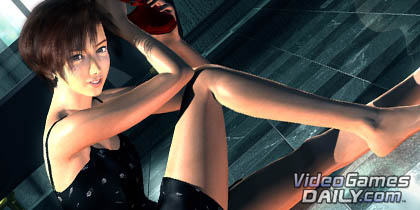
Only one thing about the Japanese PSP launch in 2004 hit me harder than the excitement of finally tracking down (and happily paying way over the odds for) an imported machine in the first place. And that was how unexpectedly awesome its flagship Japanese launch title was. Ridge Racers had to be my most played game of the year; the battle to beat the AI and come first on every track, unlocking the fantasy supercars needed to do so at any cost, and perfecting every inch of every circuit to unlock everything buried on the UMD, was a racing experience so powerfully addictive and intense, ridiculously fast and fluid, I just couldn’t stop playing. The techno soundtrack was of the magnitude of awesome that I had to seek it out online, which now that I think of it, is a common aspect of nearly every entry in my personal games of the decade.
Further Reading: Review






 Satoru Iwata Video Interview - the late Nintendo president spoke with Kikizo in 2004 as 'Nintendo Revolution' loomed.
Satoru Iwata Video Interview - the late Nintendo president spoke with Kikizo in 2004 as 'Nintendo Revolution' loomed. Kaz Hirai Video Interview - the first of Kikizo's interviews with the man who went on to become global head of Sony.
Kaz Hirai Video Interview - the first of Kikizo's interviews with the man who went on to become global head of Sony. Ed Fries Video Interview - one of Xbox's founders discusses an epic journey from Excel to Xbox.
Ed Fries Video Interview - one of Xbox's founders discusses an epic journey from Excel to Xbox. Yu Suzuki, the Kikizo Interview - we spend time with one of gaming's most revered creators.
Yu Suzuki, the Kikizo Interview - we spend time with one of gaming's most revered creators. Tetris - The Making of an Icon: Alexey Pajitnov and Henk Rogers reveal the fascinating story behind Tetris
Tetris - The Making of an Icon: Alexey Pajitnov and Henk Rogers reveal the fascinating story behind Tetris Rare founders, Chris and Tim Stamper - their only interview? Genuinely 'rare' sit down with founders of the legendary studio.
Rare founders, Chris and Tim Stamper - their only interview? Genuinely 'rare' sit down with founders of the legendary studio. The History of First-Person Shooters - a retrospective, from Maze War to Modern Warfare
The History of First-Person Shooters - a retrospective, from Maze War to Modern Warfare
Hey, where’s Gran Turismo?!
No one had it on their list – NO ONE!
Allowedly, I noticed that not until I read Project Gotham Racing and Ridge Racer, but hey, isn’t it worth mention it? For me it’s the godfather of racing simulations. Tze tze, shame on you!